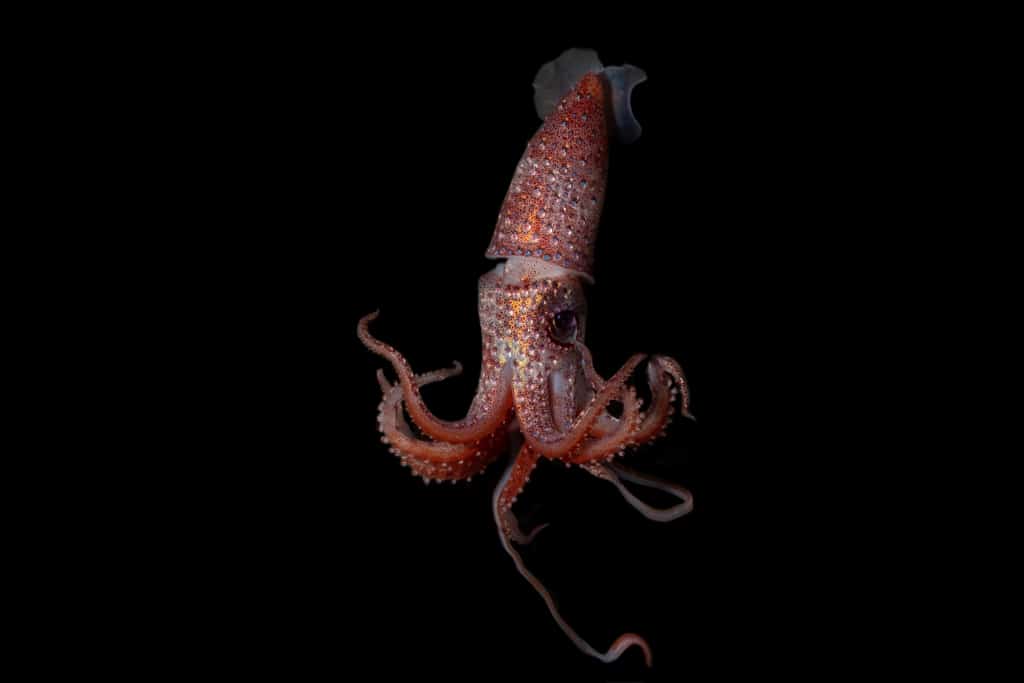Meta is discontinuing its Gaming Creator Program on Facebook, phasing out the specialized support and monetization features designed for gaming content creators. The move marks the end of an era for Facebook’s attempt to carve out a gaming…
Blog
-

I had a front-row seat to the social media revolution in global affairs roles at Twitter and Meta. The same mistakes are happening in AI
I’m not a tech naysayer. Far from it. But we’re doing it again.
A new era of technology is taking off. AI is reshaping economies, industries, and governance. And just like the last time, we’re moving fast, breaking things, and building the plane while flying it (to use some common tech phrases). These mantras have driven innovation, but we’re now living with the unintended consequences.
For over a decade, I worked in the engine room of the social media revolution, starting in U.S. government, then at Twitter and Meta. I led teams engaging with governments worldwide as they grappled with platforms they didn’t understand. At first, it was intoxicating. Technology moved faster than institutions could keep up. Then came the problems: misinformation, algorithmic bias, polarisation, political manipulation. By the time we tried to regulate it, it was too late. These platforms were too big, too embedded, too essential.
The lesson? If you wait until a technology is ubiquitous to think about safety, governance, and trust then you’ve already lost control. And yet we are on the verge of repeating the same mistakes with AI.
The new infrastructure of intelligence
For years, AI was viewed as a tech issue. Not anymore. It’s becoming the substrate for everything from energy to defence. The underlying models are getting better, deployment costs are dropping, and the stakes are rising.
The same mantras are back: build fast, launch early, scale aggressively, win the race. Only now we’re not disrupting media instead we’re reinventing society’s core infrastructure.
AI isn’t just a product. It’s a public utility. It shapes how resources are allocated, how decisions are made, and how institutions function. The consequences of getting it wrong are exponentially greater than with social media.
Some risks look eerily familiar. Models trained on opaque data with no external oversight. Algorithms optimised for performance over safety. Closed systems making decisions we don’t fully understand. Global governance void whilst capital flows faster than regulation.
And once again, the dominant narrative is: “We’ll figure it out as we go.”
We need a new playbook
The social media era playbook of move fast, ask forgiveness, resist oversight won’t work for AI. We’ve seen what happens when platforms scale faster than the institutions meant to govern them.
This time, the stakes are higher. AI systems aren’t just mediating communication. They’re starting to influence reality from how energy is transferred to how infrastructure is allocated during crises.
Energy as a case study
Energy is the best example of an industry where infrastructure is destiny. It’s complex, regulated, mission-critical, and global. It’s the sector that will either enable or limit the next phase of AI.
AI racks in data centres consume 10-50 times more power than traditional systems. Training a large model requires the same energy as 120 homes use annually. AI workloads are expected to drive a 2-3x increase in global data centre electricity demand by 2030.
Already, AI is being embedded in systems optimising grids, forecasting outages, and integrating renewables. But without the correct oversights, we could face scenarios where AI systems prioritise industrial customers over residential areas during peak demand. Or crises where AI makes thousands of rapid decisions during emergencies that leave entire regions without power and no one can explain why or override the system. This is not about choosing sides. It is about designing systems that work together, safely and transparently.
Don’t repeat the past
We’re still early. We have time to shape the systems that will govern this technology. But that window is closing. So, we must act differently.
We must understand that incentive structures shape outcomes in invisible ways. If models prioritise efficiency without safeguards, we risk building systems that reinforce bias or push reliability to the edge until something breaks.
We must govern from the beginning, not the end. Regulation shouldn’t be a retroactive fix but a design principle.
We must treat infrastructure as infrastructure. Energy, compute, and data centres must be built with long-term governance in mind, not short-term optimisation.
We cannot rush critical systems without robust testing, red teaming and auditing. Once embedded at scale, it’s nearly impossible to reverse harmful design choices.
We must align public, private, and global actors, which can be achieved through truly cross-sector events like ADIPEC, a global energy platform that brings together governments, energy companies and technology innovators to debate and discuss the future of energy and AI.
No company or country can solve this alone. We need shared standards and interoperable systems that can evolve over time. The social media revolution showed what happens when innovation outpaces institutions. With AI, we get to choose a different path. Yes, we’ll move fast. But let’s not break the systems we depend on. Because this time, we’re not just building networks. We’re building the next foundation of the modern world.
The opinions expressed in Fortune.com commentary pieces are solely the views of their authors and do not necessarily reflect the opinions and beliefs of Fortune.
Fortune Global Forum returns Oct. 26–27, 2025 in Riyadh. CEOs and global leaders will gather for a dynamic, invitation-only event shaping the future of business. Apply for an invitation.Continue Reading
-

Morgan Housel: Wealth requires long-term effort
Alistair Berg | Digitalvision | Getty Images
When it comes to how we approach money, “no one is crazy,” Morgan Housel wrote in his bestselling 2020 book on building wealth, “The Psychology of Money.”
And when it comes to the way we spend money, the decisions we make are just as personal, Housel, a partner at Collaborative Fund, writes in his new book, “The Art of Spending Money.”
“It’s an art because it’s subjective,” Housel told CNBC.com in an interview ahead of the book’s Oct. 7 publication.
Those decisions are crucial to building and maintaining wealth, he says: “Wealth is always a two-part equation — it’s what you have minus what you want.”
How people aspire to spend their money is often strongly influenced by society, marketing or social media, Housel said.
But those spending habits may not actually make you happy in life, he said. And what you value today may not be what you value 20 years from now.
“I think the biggest aspect is that you have to figure it out for yourself,” Housel said.
CNBC spoke with Housel about how to balance social expectations with personal values, and the questions we need to ask ourselves to better align our spending and values.
The conversation has been edited and condensed for clarity.
‘If nobody was watching, how could I live?’
Morgan Housel, author of “The Psychology of Money” and partner at the Collaborative Fund.
Morgan Housel
Lorie Konish: You write about external versus internal benchmarks when it comes to spending. What are some examples of that?
Morgan Housel: Buying a bigger house might make you happier if it makes it easier to have your friends and family over. But it’s the friends and family that are making you happy. That’s the internal benchmark. Spending money on a vacation might make you happier if it’s the only time that it allows you to detach from your daily life and from your job so that you can spend time with your friends and family. But you have to acknowledge that it is that that is making you happy.
The external benchmark would be trying to get the attention, mainly of strangers. And a lot of people do that. I do this. It’s a very normal and natural thing, the assumption of, if I had this car, if I was wearing these clothes, if I lived in this house, if I posted these pictures on social media, other people will respect and admire me.
It’s not that it is black-and-white false in that situation, it’s that we overestimate how much strangers are paying attention to you. Because the truth is, most of the time they are thinking about themselves. They’re thinking about their own car, their own clothes. And if they do look at you and say, “Wow, she has a really nice car,” they’re probably not admiring you. They’re imagining themselves in that car and daydreaming about the respect and admiration they would receive.
LK: It’s like that choice between utility and status that you write about, with utility making your life better and status changing other people’s opinions of you. Should you be striving for one over the other?
MH: I think we have to acknowledge that status is not a bad thing. I engage with it. We all do in our own way. If you were to dress exactly as you wanted to, that fits your personality, it might exclude you from certain social groups and job opportunities.
So, having a certain level of status signaling is not bad. The point is, we overestimate the respect and admiration we’re going to get from it.
If nobody was watching, how could I live? If nobody except maybe my immediate family could see the way that I was living, how would I choose to live? I would not want a fancy sports car. I would probably want a nice pickup truck that gave me a lot of utility. I would not want a house in the most exclusive, expensive zip code. I would want a house with a beautiful view, wherever that might be. If nobody was watching, I would just want to do X, Y and Z that really feeds my soul and makes me happy.
The knee-jerk reaction is to lean more towards the social signaling side, because so much of the modern world is geared towards that. It’s always a balance. It’s just that our balance tends to be in the wrong direction.
‘What actually matters in terms of building wealth’
LK: You write that FOMO, the fear of missing out, is one of the most dangerous financial reactions to exist. How can we avoid that?
MH: If I see somebody getting wealthier, that’s only a small part of what’s going on behind the scenes. And there’s a great quote from [entertainer] Jimmy Carr where he says, “Everyone is jealous of what you’ve got, no one is jealous of how you got it.” And so even if you can see somebody getting wealthier, you can’t see the quality of their relationships, you can’t see their health, you can’t see their confidence. You can’t see all these other things that make an enormous impact and the quality and the happiness of their life.
What actually matters in terms of building wealth over the course of your life is not how quickly you got rich this year, it’s how long you can keep your compounding going. If you can earn nearly average returns for an above-average period of time, you can do extraordinarily well. The normal intuition among even very smart people is that if you want to get rich, you need to do it fast, very quickly. And it is not intuitive, even if it is accurate and right, that the way to actually get rich is to be merely average for a very long period of time.
That’s why FOMO can be so dangerous. It pushes us towards the wrong end of the equation. It pushes us towards getting rich fast, whereas I think the much more durable way to actually build a big fortune is to get rich slow.
LK: We’re constantly making spending decisions that will influence our futures versus what we enjoy today. How do we strike a balance there?
MH: It’s never as simple as, spend your money today, live for today, like the YOLO attitude. And it’s never as simple as, save for tomorrow, you need to compound your money and build your wealth. It’s always just a balance of, what are you going to regret in the future?
Everyone’s propensity for regret is going to be different. Yours is different from mine, and vice versa. Looking back at your life at some point in the future, whether that’s a year from now or 50 years from now, what are you going to look back on and say, I wish I did that differently?
This was an idea I got from Daniel Kahneman, the late psychologist, where he said if you want to be a good investor, you need a very well-calibrated sense of your future regret. Volatility in the stock market is only a risk to the extent that you’re going to regret it at some point in the future. If you ask most investors today, “How much do you regret the fact that you experienced the bear market of 2011?”, they’re going to be like, “What? I forgot that even existed. I don’t even think about it anymore.” So it wasn’t actually a risk.
‘Wealth is always a two-part equation’
LK: You write about the parable of the Mexican fisherman, who works only a few hours a day. He then meets an American businessman who advises him to work hard for 10 years and invest and grow his business so that he can then retire and work for a few hours a day. The irony is that he already has that lifestyle. We have this concept of always needing more, but when do you have enough? And how do you get comfortable with that?
MH: I want to live in a society in which the vast majority of people wake up every morning and say, “This is not enough,” because that’s the seed of innovation. That’s the seed of progress. The reason that I think my kids and grandkids will live in a much better world than you and I do today is because they and their peers will wake up every morning and say, “It’s not enough. I need to go solve more problems, build more wealth.”
This is not a societal problem. This is a societal benefit. But at the individual level, it can create a situation where your dreams are always one step away and you never get any kind of fulfillment in life.
Wealth is always a two-part equation — it’s what you have minus what you want.
Almost all of our emphasis and effort in the financial world goes towards the former, how can you have more? How can you build more? I think the second half of that equation is actually more important part, because some sense of control over it. I have no control over what the stock market’s going to do this year, but I do have control over what I want and my ability to be a little bit more content.
When people daydream about having a bigger house or a nicer car, by and large what they are doing is they are imagining themselves being content with those things in the future. You imagine yourself in that house saying, “This is all I want. I don’t need anything else.”
So a lot of times when people are chasing happiness with money, part of the problem is that happiness is always a fleeting emotion. No one is happy for extended periods of time. If I tell you a funny joke, you don’t laugh for 10 years, you laugh for 30 seconds.
What we’re going for is contentment, just getting to a point where we say, “I’m good and I appreciate what we have.” It’s much easier said than done. A lot of my material aspirations are to impress strangers. And when I remind myself that no one’s paying attention, then those desires tend to drop. No one’s thinking about you as much as you are.
When you come to terms with that, you can use your money for something that is actually way more valuable to you, which is independence.
Continue Reading
-

A Great Year for US Stocks? Not Compared to Rest of the World
An S&P 500 chart displayed during the Alliance Laundry Holdings Inc. initial public offering (IPO) on the floor of the New York Stock Exchange (NYSE) in New York, US, on Thursday, Oct. 9, 2025. Alliance Laundry Holdings Inc. and its private equity owner raised $826.3 million in an initial public offering, pricing the shares at $22 each, the top of a marketed range. (Bloomberg) — Check a ranking of the best-performing equity indexes this year and the US doesn’t crack the Top 10. You won’t find it in the Top 25, either. Double that, and the S&P 500 is still absent.
The tally needs to unfurl all the way to 66 before the world’s most valuable equity index shows up — leaving it way behind Greece’s Athex and even Israel’s TA-35. It’s one of the worst relative performances since the global financial crisis for the US benchmark.
Most Read from Bloomberg
The underperformance is even more surprising given the S&P 500’s rally to countless records in 2025. But it’s still trailing most developed market benchmarks like Germany’s DAX and Japan’s Nikkei 225, and lags behind gauges in South Korea, Spain and Ghana, when measured in dollars.
That last qualifier is critical, though not determinant. The US currency has fallen this year, helping to boost returns on foreign bourses in dollar terms. That’s certainly the thrust behind gains of at least 39% in Colombia and Morocco.
But even in local-currency rankings, the S&P 500 comes in just 57th, hardly befitting of a measure home to the six most valuable companies in the world, along with the likes of Coca-Cola Co., McDonald’s Corp. and Walt Disney Co.
The underperformance, market participants say, owes just as much to a broader shift in the mindset among foreign investors, who have started targeting domestic champions as President Donald Trump wages a global trade war. Tensions ramped up on Friday after the president renewed threats of tariffs on China. Even in the US, they’re being more selective, with a focus on big tech rather than broad-based indexes.
Added to that is a growing sense of concern about political and fiscal stability in the world’s largest economy. Trump’s tax and spending bill is projected to blow out the deficit. The government has been shut down since the start of October, the president is increasingly threatening the central bank’s independence and public investment decisions have become less policy-based.
Together, the moves have shaken confidence in America, weakened the dollar and helped stoke a torrid rally in gold. While long-term Treasury yields haven’t exploded in any similar fashion, they’ve been elevated relative to recent years.
Continue Reading
-
Xiaomi 17 Ultra Satellite Edition coming with jumbo 6800mAh battery – Huawei Central
- Xiaomi 17 Ultra Satellite Edition coming with jumbo 6800mAh battery Huawei Central
- Xiaomi 17 Ultra’s camera details tipped – GSMArena.com news GSMArena.com
- Xiaomi 17 Ultra Leak Hints at 200MP Camera with Major Upgrades TechJuice
- Xiaomi 17 Ultra…
Continue Reading
-
Rare new species of Jurassic-era ‘sword dragon’ discovered could solve a mystery
A rare marine species has just been discovered, which could pinpoint a very interesting time in history for the Jurassic period.
Found on the UK’s Jurassic Coast, this new and rare species of ichthyosaur was revealed in a study published just…
Continue Reading
-

iQOO 15 unboxed ahead of launch, charging speed downgrade confirmed
iQOO will unveil the iQOO 15 on October 20 at an event in Shenzhen, China. The brand recently shared some pictures of the iQOO 15, revealing its color options and giving us a fair idea of the smartphone’s design. Now, the iQOO 15 has…
Continue Reading
-

The Ocean’s ‘Twilight Zone’ Is Under Threat — We Must Act Now
Motion 035: Protection of Mesopelagic Ecosystem Integrity goes to vote at the World Conservation Congress this October. It urges nations not to authorize commercial fishing or other harmful activities in the deep ocean until we understand it better. If passed, this motion would be a crucial step toward ensuring that life in the deep layers of the ocean continues to thrive, and human activity in this space proceeds only when proven to pose no harm.
—
By Silvie Alexander, Kristin Kleisner, Dr. Lance Morgan, Chris Dorsett and Kristina Gjerde.
Beneath the waves, between 200 and 1,000 meters deep, lies one of Earth’s most mysterious and vital ecosystems: the mesopelagic zone, also known as the Ocean Twilight Zone. Though shrouded in darkness, this vast layer spans the globe and harbors an estimated 90% of all fish biomass, making it the largest unexploited ecosystem on the planet.
Until recently, this deep sea zone remained largely unknown. But as scientific discovery begins shedding light on the mesopelagic’s immense ecological and climate value, a new threat is rising: industrial exploitation.
Fishing fleets are eyeing this zone for extraction as demand for fishmeal and fish oil increases. Other potential activities like deep-sea mining and marine carbon dioxide removal technologies also threaten the integrity of the mesopelagic ecosystem and its services.
Equipped with a large, scoop-like jaw, this fish’s name—gulper eel—sums up its ability to expand its throat and stomach to accommodate food much larger than itself. Its balloon-like capacity is a helpful adaptation for an opportunistic eater—the tiny teeth that line its jaws certainly wouldn’t be up to the job alone. Photo: Paul Caiger/Woods Hole Oceanographic Institution. If we are serious about fighting climate change and preserving ocean health, the world must act now to protect this fragile, extraordinary ecosystem before it is too late. An upcoming vote at the International Union for the Conservation of Nature (IUCN) Conservation Congress is the first step.
Lungs of the Ocean
Though invisible from the surface, the mesopelagic zone isn’t lifeless. It is teeming with bioluminescent fish, jellyfish, and otherworldly creatures, many of which remain unnamed, unstudied, or entirely undiscovered. But what makes this region truly exceptional is the essential role it plays in regulating our climate.
Each night, billions of mesopelagic organisms perform the largest animal migration on Earth: migrating to the surface to feed on carbon-rich plankton, then returning to the depths by day. This nightly movement pulls massive amounts of carbon from surface waters to the deep ocean, where it can be sequestered for hundreds to thousands of years.
It is estimated that mesopelagic species help transport 2-6 gigatons of carbon every year, more than double the annual emissions from all the world’s cars. And that is a conservative range based on our limited knowledge of the region’s biomass. Some scientists estimate migrating mesopelagic organisms facilitate the sequestration of over half the carbon stored by the ocean’s biologic carbon pump, with others positing they are responsible for up to 90% of deep ocean carbon storage.

Mesobot is a hybrid remotely operated vehicle designed specifically to study life in the ocean twilight zone. It can maneuver under its own power for more than 24 hours, using its cameras and lights to slowly follow individual animals while making a variety of other measurements and even taking samples. Photo: Marine Imaging Technologies, LLC/Woods Hole Oceanographic Institution. As science deepens its understanding of the mesopelagic zone and its species, it is increasingly evident that it is one of the planet’s most powerful climate stabilizers. Without it, Earth could be significantly hotter and climate impacts far more extreme.
In addition to carbon transport, mesopelagic organisms form the foundation of oceanic food webs, serving as vital prey for economically and culturally significant species such as tuna, swordfish, sharks, sperm whales, and sea lions. In other words, what happens in the mesopelagic zone ripples out across entire ocean ecosystems and affects the communities and industries that depend on them.
Moreover, it is clear a vast number of species have evolved to the unique attributes of this dynamic deep sea environment, yet scientists have only catalogued a fraction. Considering the contributions biodiversity makes to science and life saving medicines every year, this is an invaluable benefit that we cannot afford to lose.
A New Gold Rush in the Deep Sea
Despite its societal, ecological, and climate value, the mesopelagic zone is now in the crosshairs of industrial-scale exploitation. Fishing companies are exploring it as a new source of fishmeal and fish oil (FMFO), used in aquaculture, livestock, and even pet food.

This bejeweled beauty is a strawberry squid (Histioteuthis reversa), sampled from the ocean twilight zone, a about 1,000 meters (~3,300 feet) deep. It is a source of food for many of the large apex predators that dive down into the twilight zone to feed. Photo: Paul Caiger/Woods Hole Oceanographic Institution. Currently, about 30% of global wild-caught fish are ground into FMFO. But as fisheries falter under climate stress and overfishing, attention is shifting to deeper, more abundant mesopelagic species. For industry, it is a business opportunity. For the planet, it is a dangerous gamble.
We Have More to Learn – And We Must Learn Fast
It is worth emphasizing that we know shockingly little about the mesopelagic zone. We do not know how many species live there, how long they live, how they reproduce, or how resilient they are to disturbance. We do not know how fast these ecosystems recover from disruption, or if they can recover at all.
Unlike more familiar fisheries, there is no baseline data, no harvest limits, and no management frameworks. It is, quite literally, a scientific black box. While there may be some level of extraction that is sustainable, we do not know what these levels may be or how economic gains weigh against the damage exploitation could cause. There is research underway exploring this, but we need more before we alter this system.
Ultimately, we cannot manage what we do not measure. Fishing before we have the necessary knowledge in hand is a reckless gamble we simply cannot afford. The stakes for ocean health, biodiversity, and the global climate are too high.
A Global Call to Action
Recognizing this threat, the Marine Conservation Institute, the Environmental Defense Fund, and Ocean Conservancy are working to pass a motion at the International Union for Conservation of Nature (IUCN) that would place a precautionary pause on mesopelagic exploitation and spur the research needed to answer key questions.
Motion 035: Protection of Mesopelagic Ecosystem Integrity, goes to vote at the World Conservation Congress this October. It urges nations not to authorize commercial fishing or other harmful activities in the mesopelagic until we understand it better. If passed, this motion would be a crucial step toward ensuring the mesopelagic zone continues to thrive, and human activity in this space proceeds only when proven to pose no harm.
This is not about halting all human activity in the ocean – it is about acting responsibly, and understanding that the ocean, and particularly the mesopelagic zone, is more than a resource; it is a life-support system for us and our planet.

The ocean twilight zone hosts and incredible diversity of animals with a wide range of unusual adaptations that equip them to thrive in their unique environment. Despite the seemingly harsh conditions, scientists think the twilight zone harbors far more life than previously believed, including many undiscovered species. Photos: Paul Caiger, Nancy Copley, Larry Madin/Woods Hole Oceanographic Institution. The mesopelagic zone is one of Earth’s last truly untouched frontiers. Once lost, we do not know what will happen and we have no guarantee we can restore it.
We have a narrow window of opportunity to make the right choice. The mesopelagic zone has served us and our planet silently for millennia. Now it is time we speak up for it.
What You Can Do
If you are an ocean advocate:
- Share the importance of Motion 035 and the mesopelagic zone.
- Amplify on social media and to your networks.
- Encourage IUCN members to vote “Yes.”
If you are an IUCN Member:
- Read, comment on, and vote in support of the motion.
- Urge others to protect this extraordinary and essential ecosystem.
—
About the authors: Silvie Alexander (Blue Carbon Intern at Environmental Defense Fund), Kristin Kleisner (Lead Senior Scientist and AVP, Ocean Science at Environmental Defense Fund), Dr. Lance Morgan (marine biologist and president of Marine Conservation Institute), Chris Dorsett (Vice President, Conservation, Ocean Conservancy) and Kristina Gjerde (Senior High Seas Advisor to IUCN’s Global Marine and Polar Programme).
Featured image: Paul Caiger, Nancy Copley, Larry Madin/Woods Hole Oceanographic Institution.
This story is funded by readers like you
Our non-profit newsroom provides climate coverage free of charge and advertising. Your one-off or monthly donations play a crucial role in supporting our operations, expanding our reach, and maintaining our editorial independence.
About EO | Mission Statement | Impact & Reach | Write for us
Continue Reading
-

Accurate Wavefront Reconstruction With Optical Vortex Sensors Enables Stable Phase Tracking In Incoming Beams
Measuring the shape of light waves, known as wavefront sensing, is crucial in many optical applications, and researchers continually seek more accurate and robust methods. Magdalena Łukowicz, Aleksandra K. Korzeniewska, and Kamil Kalinowski,…
Continue Reading
-

India beat Great Britain 3-2 in opener
The junior Indian hockey team opened its Sultan of Johor Cup 2025 campaign with a 3-2 win over Great Britain at the Taman Daya Hockey Stadium in Johor Bahru, Malaysia, on Saturday.
Captain Rohit (45+’, 52′) and Ravneet Singh (23′) were the…
Continue Reading
